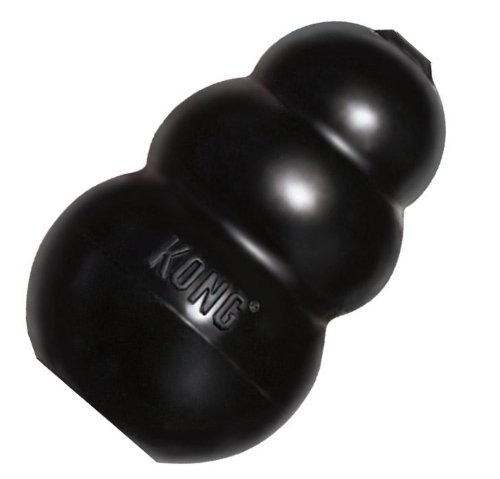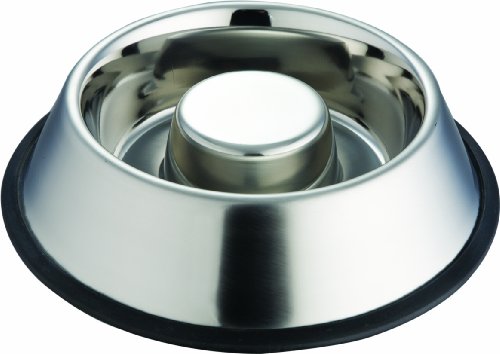
In a normal, healthy animal, it takes about 7-10 hours for a meal to be completely digested and absorbed. The beginning of this process starts when you see your dog or cat enjoying their meal. After being chewed a few times, or none at all, the food moves to the stomach through the esophagus. Once in the stomach, the food is turned into the consistency of a thick liquid with the help of digestive enzymes that break down protein. Specific glands present in the stomach wall secrete these enzymes. Hydrochloric acid is also secreted into the stomach to help these enzymes work and since it is acidic, mucus also needs to secreted to protect the stomach lining from digesting itself! As the partially digested meal leaves the stomach, more enzymes from the pancreas are added to help break down carbohydrates, fats and proteins. Sodium bicarbonate is also secreted to help neutralize the acidity of the stomach contents. The pancreas is right next to the small intestine and the bile duct joins with the pancreatic duct to empty into the small intestine. Bile from the liver travels down this duct and helps to digest fat so it is more easily absorbed. The small intestine is the site where absorption occurs, it contains tiny finger-like projections called villi that absorb the already broken down nutrients and deliver it to the rest of the body through the bloodstream. After passing through the small intestine, the remaining contents then enter the large intestine where water absorption occurs. Finally, whatever is not absorbed is then passed out as feces.
Vomiting is a common digestive disturbance and there are two types of “vomiting”. The first is regurgitation, which is the expulsion of food from the mouth or esophagus. Actual vomiting is when the material comes from the stomach and/or intestines. You can tell the difference between the two when you observe your pet’s behaviour before anything actually comes out. In regurgitation, there is no retching or stomach contractions seen, the material just comes out with no prelude beforehand. If you look at what came up, there is no bile in regurgitation since the material is coming from the mouth and esophagus. In vomiting, it is usually accompanied beforehand with vigorous stomach contractions or dry heaves and your pet may show some form of nausea, either by licking their lips, pacing, salivation or an anxious expression. Another way for your veterinarian to distinguish between the two is to use a pH stick to determine the pH level of the material. If the pH is greater than 7, it is most likely regurgitation, especially if there is no bile present.
Several things can cause regurgitation, however these are all localized to the area of the mouth and esophagus. An obstruction in the esophagus is a likely cause and the obstruction can be anything from a foreign object to a tumour that restricts the passage of food. A weakness of the esophagus can also cause regurgitation and this can be congenital, meaning that the animal was born with it or it can by acquired. In congenital, the problem is usually neurological and in acquired esophageal weakness, lead toxicity, canine distemper virus, Chagas’ disease or a neuromuscular disorder can cause the problem. Your veterinarian will most likely take x-rays of your pet’s mouth and esophageal area to determine where the problem lies. In some cases, an esophagoscopy, where a small camera is inserted into the esophagus, is better able to pinpoint the problem.
Vomiting has numerous causes and can be a side effect to many things. The main causes of vomiting are motion sickness, drugs, an obstruction in the GI tract, abdominal inflammation and diseases that affect the nerve innervating the digestive system. Your veterinarian will take diagnostic steps depending on whether the vomiting is acute or chronic and whether there is blood present in the vomitus. First, your veterinarian will determine if your animal has ingested any foreign objects, toxins, plants or drugs, then perform a physical exam to look for any foreign objects in the mouth or abdominal masses or pain. If this has not yielded any results, an abdominal x-ray is usually suggested and may show an intestinal obstruction, foreign objects or masses. Along with the x-ray, your veterinarian may also require blood work for specific viruses and/or a urinalysis to better understand what is going on with your pet. After all this has been done and still no cause of vomiting has been found, your veterinarian may then want to further examine the GI tract by doing a special type of x-ray, ultrasound and/or an endoscopy, which involves the insertion of a small camera into the GI tract. With endoscopy, a biopsy can be taken which is another test to attempt to determine the cause of the vomiting.
In the majority of cases of vomiting, careful management in the form of fluids, diet, rest and observation are all that is needed, particularly in cases of acute vomiting. Often, the animal has usually ingested something that has upset the digestive system and this may or may not be accompanied with diarrhea. With chronic vomiting, a more diagnostic approach is taken, to better determine the cause and eliminate the vomiting. If your pet begins vomiting, it is recommended to take him/her to your veterinarian as there are many causes of vomiting and your veterinarian is best able to deal with them.
By Amanda Low – Pets.ca writer
 How to Exercise Your Dog: The Benefits and Tips For Exercise
Dogs Living In The Modern WorldFor centuries,
How to Exercise Your Dog: The Benefits and Tips For Exercise
Dogs Living In The Modern WorldFor centuries,
 Great Dog Breeds: the Happy Little Papillon
The first time I was introdu
Great Dog Breeds: the Happy Little Papillon
The first time I was introdu
 Dog Breed: Beagle Lab Mix
Dog hybrids are slowly becom
Dog Breed: Beagle Lab Mix
Dog hybrids are slowly becom
 Scottish Terrier Breeder Interview: Cindy Cooke Tells Us About Scotties
Scottish Terrier Breeder Interview
Cindy Cooke has been wor
Scottish Terrier Breeder Interview: Cindy Cooke Tells Us About Scotties
Scottish Terrier Breeder Interview
Cindy Cooke has been wor
 Indipet Slow Feed Pet Bowl
If you have a dog that loves
Indipet Slow Feed Pet Bowl
If you have a dog that loves
Copyright © 2005-2016 Pet Information All Rights Reserved
Contact us: www162date@outlook.com